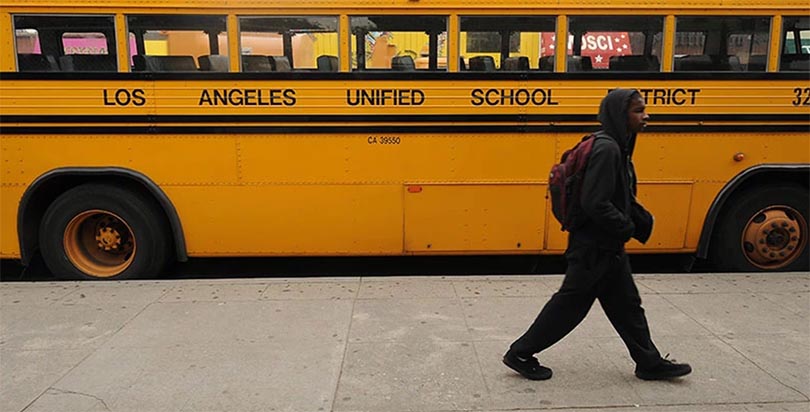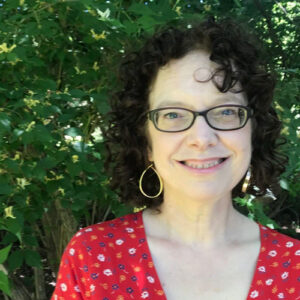Analysis: The New Politics of the Los Angeles School Board Race, as More Families Prefer Charters

This piece was produced in partnership with LA School Report; see LASR’s profiles of all 2017 LAUSD school board candidates.
When I first ran on a three-person slate for my local New Jersey school board 12 years ago, I thought we’d hit the big time. Media coverage! Bellicose debates! Political intrigue!
Our “Team for Change” platform comprised fiscal and academic accountability, as well as an intense focus on student needs — the oversight of these elements, after all, is the primary responsibility of a school board — and our certitude garnered enough votes to sweep the election. Afterward, we partied as if we had been magically transformed into starring characters on the idealistic political TV drama popular at the time, The West Wing. Just call me Jed Bartlet.
Or not. Turns out that our “Team for Change” victory was less Hollywood and more middle school theater production, at least compared with the current school board race in the Los Angeles Unified School District, where 13 candidates are running for three seats on the seven-member school board. (The primary is this Tuesday, March 7, and a general election will be held on May 16 if no candidate receives a majority of votes in any one district.)
While all appear to agree on the district’s most pressing challenges that would typically preoccupy a board — lackluster student performance, inadequate funding, pension liabilities, infrastructure adjustment needs — the campaign has devolved into a referendum on public school choice. This obsessive focus on the growing popularity of district charter schools, fueled by the deep pockets of opposing special interest groups, undermines meaningful debate and, further down the road, the ability of a reconfigured LAUSD school board to effectively oversee the district.
LAUSD is the second-largest school district in the country, covering 710 square miles and educating 665,000 students. Sixteen percent of those students, or 107,000, are educated in the district’s charter school sector, with an additional 40,000 prospective charter students on waiting lists. With this sort of multi-sector ecosystem, collaboration among all leaders is essential. This is about education, not market share, right? Students are students. Public schools are public schools.
Once upon a time, LAUSD had the best intentions for collaborative leadership. According to a new report from the Center for Reinventing Public Education (CRPE) called “Bridging the District-Charter Divide,” LAUSD was one of 23 districts to sign a District-Charter Collaboration Compact with their charter partners. The CRPE report rates the level of cooperation between sectors on a scale from “none” to “embedded.” At its peak, LAUSD garnered a “basic” rating. But in the past few years, collaboration has slumped to a whimper; CRPE currently rates the district as “emerging,” one step above “none.”
“Moving to transactional cooperation without tending to underlying trust can create partnerships that cannot weather leadership transitions,” the report notes. “The biggest cooperation win in Los Angeles was a district-created funding mechanism to support more autonomy for charter schools around special education services: the charter schools saw this as a critical lifeline that let them improve services for students with disabilities.
“But when Aspire, a high-performing charter operator, decided they wanted to continue working with a regional entity on special education outside of the Los Angeles Unified School District, the school board reacted by refusing to renew the charter of several of the operator’s schools,” the report continues. “Ultimately, the board’s high-profile action was widely seen as self-defeating since the successful charter operator simply appealed the decision and was granted a charter by the county.”
The authors of the CRPE report are too kind. The reference to a lack of “underlying trust” is but a pale echo of the enmity that drives the dynamics of the current school board race and threatens to sabotage collaborative leadership. And with a projected $1.46 billion cumulative deficit, $13.6 billion in unfunded pension liabilities, a 22 percent increase in staff despite declining enrollment, a 75 percent high school graduation rate, and student proficiency rates of 29 percent in math and 39 percent in language arts, there is so much at stake.
Now, to be fair to those who blame school choice for the district’s fiscal deterioration, let’s stipulate that enrollment is a zero-sum game: When student enrollment shifts, districts must shift as well, and that’s really hard. At its best it resembles a graceless dance, more Keystone Kops than Misty Copeland, even for the most functional school boards. For examples from my coast, look at the less-than-balletic performances of former Newark superintendent Cami Anderson in Newark and New York City Mayor Bill de Blasio.
But parents get to choose. And, increasingly — in LAUSD and elsewhere — they are choosing public charter schools, which, in the best-regulated sectors (and LAUSD is a pretty good one), receive an increased level of autonomy in exchange for an increased level of accountability. In the past 10 years the number of charter schools in Los Angeles has tripled, which is tough for representatives of traditional schools to swallow. Yet for any educational advocate — indeed, for any school board member — there should be nothing more important than maximizing student achievement, regardless of the governance of the school building in which those students learn.
You wouldn’t know it, judging by the dynamics of this LAUSD election cycle. Let’s look at District 4. (LAUSD has seven districts, and each elects a school board member.) Four candidates are running for the District 4 seat: current school board President Steve Zimmer, Nick Melvoin, Gregory Martayan, and Allison Holdorff Polhill. The real heat shimmers from Zimmer, the favored son of United Teachers Los Angeles (UTLA), the local teachers union, which has bequeathed him with campaign cash in exchange for his reliable disdain for charter schools. How reliable? Back in 2013 LA School Report noted that Diane Ravitch, who regards charter schools as the devil’s work, was hosted at Occidental College by none other than Steve Zimmer. And — so Hollywood! — Matt Damon came too.
School choice proponent Melvoin, however, is nipping at Zimmer’s heels. Melvoin has raised nearly $390,000 in contributions and has received $433,000 in independent expenditures supporting him — $15,000 from former LA mayor Richard Riordan and the rest from a group sponsored by the California Charter Schools Association Advocates. He’s also been endorsed by the Los Angeles Times, former LA mayors Riordan and Antonio Villaraigosa, and the Los Angeles County Young Democrats. In fact, according to the most recent campaign finance reports from the Los Angeles City Ethics Commission, candidates for this school board election have raised, as of Feb. 23, more than $1.1 million in contributions, with two-thirds of that just for District 4. (For context from the middle school stage, my three-person slate raised about $3,000.) And then there’s outside money, which has just topped $4 million for all three board seat races.
Melvoin promotes, according to the LA School Report, “a collaborative relationship between the board and charter schools, not a punitive one.” His support for charters, he says, “doesn’t come at the expense of all district schools” but is grounded in his goal “to improve all of LA’s public schools.”
“I’ve met so many parents who have students enrolled in different types of public schools — traditional district, charter, magnet, pilot — and they’re less concerned with what we call the school than they are about whether it’s meeting the needs of their child,” says Melvoin. “We have a wonderful and diverse new ecosystem of public schools in Los Angeles. The old LAUSD-vs.-charter dichotomy needs to give way to policies — from co-location to funding to sharing best practices — that address this new, and positive, reality.”
District 4 candidate Allison Holdorff Polhill supports all public schools, “whether traditional, magnet, pilot or charter schools,” she said in an emailed response to questions from KPCC. “Let’s use what works. We need to end the polarizing arguments and focus on what’s important — the students.”
Gregory Martayan told LA School Report that he is “a pro-Israel candidate that believes that the Orthodox Jewish community deserves services from the LAUSD.” His platform includes kosher kitchens. He says he’ll “win big.”
Whoever wins this election will have bigger problems than the availability of knishes on campus. Chief among those is educational leadership, an essential element of well-functioning school districts. Superintendent John Deasy resigned after he was embroiled in a scandal regarding $1.3 billion for the purchase of 650,000 iPads after emails revealed that he had close contact with Apple and Pearson (the investigation was reported closed last week with no charges filed) and testified in the court case known as Vergara v. California, which took on the nation’s most lenient tenure laws. At the time, Zimmer told The Atlantic that he was personally “disturbed” that “Deasy seemed to enjoy taking down laws that were put in place to protect the 28,000 teachers he leads.” However, current LAUSD superintendent Michelle King recently expressed a desire to “de-escalate the charter school debate” in order to get away from “this us-them and ‘this one’s better than that one’ ” dichotomy that undermines the board’s ability to balance priorities.
That’s a good sign for all the students who attend LAUSD, whether they go to traditional, special education, magnet, or charter schools. But take it from me: It takes a collaborative relationship not only among schools but also between a board and an educational leader in order for a district to best serve students. For example, Paymon Rouhanifard, a relatively new superintendent in Camden, New Jersey’s lowest-performing school district, leads an aggregation of traditional, charter, and hybrid traditional/charter schools. Despite efforts of local anti-choice groups, he has fostered trust among many community stakeholders and upward trends in student achievement.
Good school boardsmanship has none of the glamour associated with Hollywood, and members who play to the crowds will relegate themselves to minor roles. If a newly configured LAUSD board is committed to validating the community’s trust, they must work collaboratively with their superintendent and all school leaders to ameliorate fiscal, infrastructural, and achievement problems. Idle discord over the inevitable expansion of district charter schools does nothing for district students whom board members ultimately serve.
Laura Waters writes about education policy and politics at NJ Left Behind, New York School Talk, Education Post, and other publications. She just finished serving 12 years on her local school board in Lawrence, N.J., and was president for nine of those years.
Get stories like these delivered straight to your inbox. Sign up for The 74 Newsletter

;)
